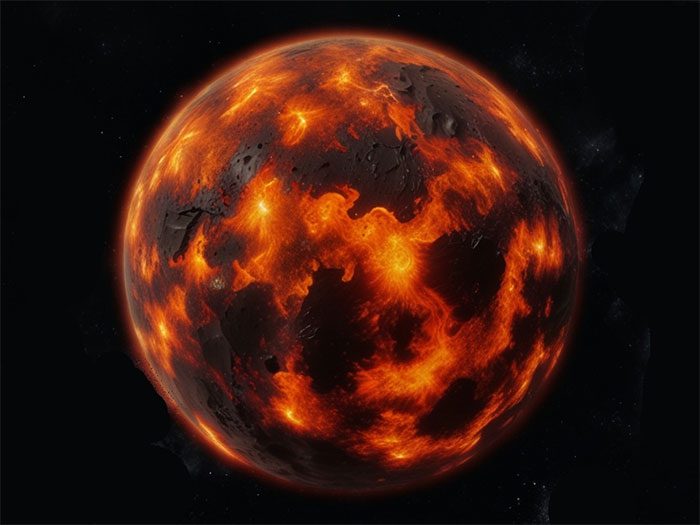The remaining zircon crystals from the Hadean Eon have revealed when a critical event for Earth’s life began.
In a recently published study in the journal PNAS, scientists examined nearly 1,000 zircon crystals collected from the Jack Hills region in Australia, which provides significant geological evidence about Earth’s “infancy” period.
The results showed that over 35% of these zircons belong to the S-type, a group of crystals that represent tectonic activity.

Earth during the Hadean Eon – (AI Image: Anh Thư).
Tectonic activity is the process through which tectonic plates—essentially pieces of Earth’s crust—shift, slide over one another, or subduct into the mantle.
While it causes catastrophic events—from continents colliding and separating to earthquakes and volcanic eruptions—it also plays a crucial role in stabilizing climate, atmosphere, and maintaining chemical balance on the planet.
Therefore, tectonic activity is one of the essential conditions for Earth to generate and sustain life.
Previously, it was thought that this process began only after or at the end of the Hadean Eon, the “fireball” stage of Earth, which lasted from the planet’s formation until about 3.8 billion years ago.
However, the identified S-type zircons in Australia date back to 4.2 billion years ago.
This serves as evidence for the onset of tectonic activity.
During the Hadean Eon, Earth had an atmosphere rich in ammonia and methane, which eventually condensed to form an ocean covering the entire planet. During this period, Earth gradually cooled to create a solid outer crust.
The 4.2 billion-year-old zircon “treasures” indicate that by this time, the outer crust had not only formed but had also divided into tectonic plates, initiating a critical movement for the planet’s evolutionary process.
This shows that our planet underwent a tumultuous and rapidly evolving early phase much sooner than previously thought.
The research was led by a team from the Institute of Geology and Geophysics and the University of Earth and Planetary Sciences, both part of the Chinese Academy of Sciences.





















































